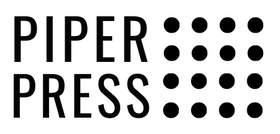Greg O’Brien on writing about art…
Some time later the publishers Heinemann / Reed came upon a crackerjack bundle of photo-portraits of New Zealand writers by Robert Cross and they needed some non-fiction to haul alongside. They asked Michael if he would do it and, lucky for me, he was too busy; he then came up with the dubious suggestion that they bring on board this youthful poet/illustrator he had met. A young man with time on his hands. The resultant book, Moments of Invention, was my grand excuse to trawl the country interviewing poets, novelists and short story writers. Hence began my serious education. I had cups of tea with Janet Frame in Albert Park; ate Welsh rarebit with Hone Tuwhare in Dundas St, Dunedin. Recalling those and other long conversations—with Mahy, Curnow, Shadbolt—it is as if I am in the presence of my ancestors. Here in this tumultuous, percolating library the exact size and shape of New Zealand.
I spun my advance of $1500 out for nearly a year, living on nothing but the goodness of the writing tribe. Let’s forget about the economics of what we do. If you hold with the fiscal model—as we’re so often told to in the modern world—then the last 25 years of my life have been an abject and dismal failure. (That said, these last few weeks have been a dramatic and gratefully received glitch.)
Upon publication, Moments of Invention was reviewed approvingly by Michael King. Although he did have one major reservation, and a fair one it was: amidst all the poets and novelists I had interviewed, there were no Non-Fiction writers. They were, he said, creative souls too! It is poetic justice that I am standing here today receiving the non-fiction award. I think Michael would have enjoyed this.
Along the way, I fell in with a good crowd of publishers—people like Dennis McEldowney, and Jane Connor (who commissioned my book on New Zealand painting Lands and Deeds). During the decade I had a part-time job at City Gallery Wellington, Lara Strongman, Heather Galbraith and Paula Savage were my co-authors in various projects—as was the late Milton Hohaia, of Parihaka Pa. Fergus Barrowman and VUP jumped in from time to time. Later, it was Elizabeth Caffin’s idea that I write the books on art for young people. At AUP, Anna Hodge and Sam Elworthy got behind my book on Graham Percy. I’m also grateful to Ron Sang; to John Dunn and Margaret Bishop of the Piper Press in Sydney, who published my monograph on Euan Macleod; and especially to Michael Schmidt at Carcanet in England, who continues to support my work as a kind of travel writer and literary roustabout.
I have always written non-fiction not only to explore things but to embrace and honour them. My most recent non-fiction project began with a journey to Raoul Island, 1000km north of mainland New Zealand. The KERMADEC book and exhibition were the result. In the process, my concept of this place we inhabit was altered, enhanced, deepened... Like the other artists on the voyage, returning home I felt as if I had stood on the top of the world—and I had done so without leaving New Zealand territory. It was a similar feeling to that which I experienced when I first arrived on Ralph Hotere’s doorstep at Port Chalmers, 15 years earlier. Aotearoa/New Zealand, the place and the people, have a profound singularity, a power and a character—and this has been one of the great non-fictions, the great truths of my life. All my books have been about this–from the art books for curious children to my history of the School Journal to my book about oceans near and far, News of the swimmer reaches shore.
In art we realise our deepest responsibilities. I believe that non-fiction writing is an act of preservation on behalf of those things we care deeply about: the many-layered existence of the people and this land, and also—as I experienced during the Kermadec voyage—our place in the Pacific Ocean, which is the great engine of our planet and which frames our reality as island-dwellers.
Non-fiction is a nation thinking its thoughts about itself, as poetry is the singing of a nation’s song and fiction is an uncovering of its secrets. I value this award because it places a line around what all writers do—and I thank the Prime Minister for so warmly acknowledging the part we play in ‘deepening the stream’, to use Monte Holcroft’s phrase. We need literature and the arts to enrich reality, to render it uncontainable, unpredictable, inexhaustible, irresistable if at times perplexing, transcendent—to humble us, and remind us we are answerable to our ancestors as we are to our descendents.
Writers are always in debt to other writers but, as someone who has written often about other artists and authors I am more indebted than most. So I accept this award not as a singular person, but as one standing amidst a very remarkable crowd—a crowd made up of everyone, the dead as well as the living, whom I have written about over the past 25 years.
Congratulations to my friend and publisher Peter Simpson. And also to the next two, as yet unnamed, award recipients, both of whom were huge inspirations for me during my formative years—a period of my life I am still very much in the midst of. And finally thanks to my parents, who are also here, for acclimatising early on to the fact I would never ever have a real job. And to my family Jen, Jack-Marcel, Felix and Carlo, who remind me that whether it is my prose-style or my dishwashing, a thing is only meaningful in so far as it has love in it. That is the over-riding non-fiction of my life, the very fact of the matter.
